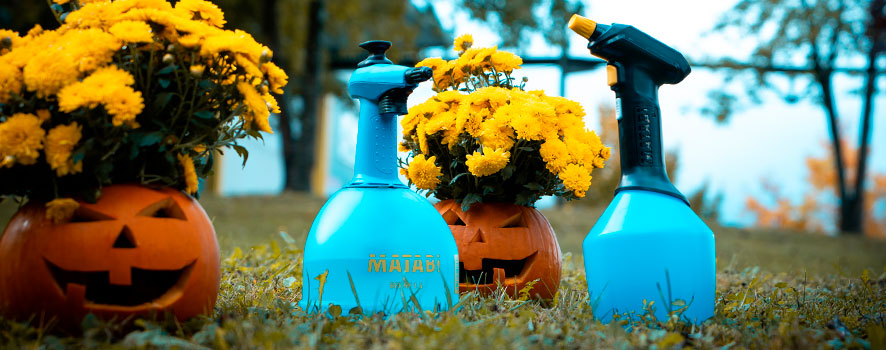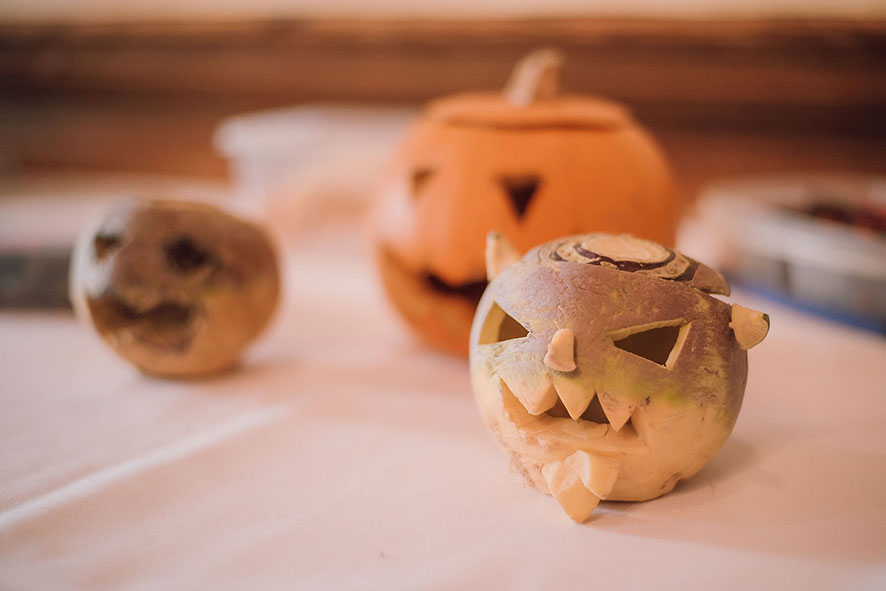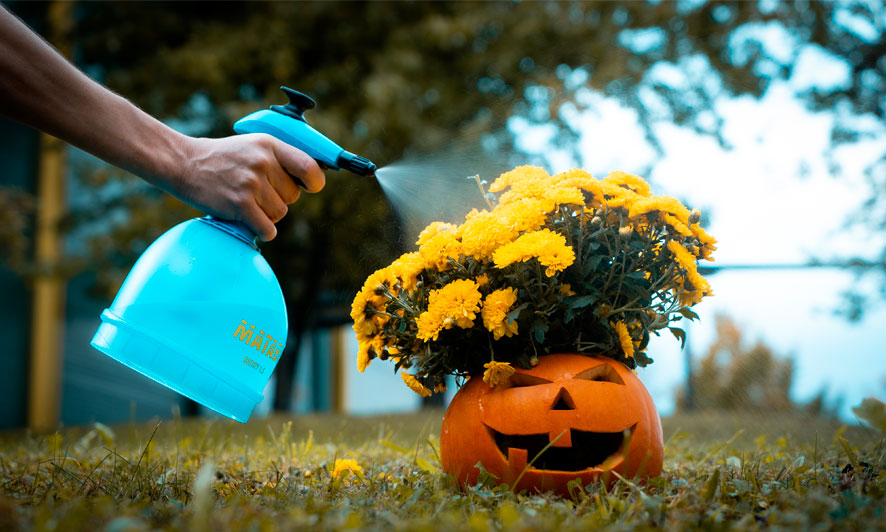
Every October 31st, carved pumpkins are featured on many porches, atriums, storefronts and gardens around the world. The fanciful decoration of the night of all the dead and the tradition of 'trick or treating' cannot be missing on Halloween night.
Before giving you some decorative tips, we are going to go a little into the origins of this pagan holiday. Did you not know that the original vegetable that stars on the eve of All Saints' Day is actually the turnip?
Stingy Jack and the turnips
Many of you will think that Halloween is a celebration of American origin, but in reality the Halloween holiday comes from Ireland and from the particular story of an inhabitant named Jack O’Lantern.
According to the legend, Stingy Jack was an Irish trickster who always got his way. His antics were so well known that they came to compare him to the devil himself and when this gossip reached Satan's ears, the same Devil decided that it was time to take Jack to hell with him.
Jack asked the devil one last wish before taking him forever, he asked him to take some apples from a very tall tree and while he did so, Jack drew a circle full of crucifixes around the tree so that the demon would be trapped in the heights.
It is then that he negotiated with the demon that he would never take his soul and that in return he would remove the circle that he had created. The devil accepted.
For years Jack lived in peace, but no one promised him immortality and like everyone else, his time also came. Stingy Jack was forbidden from heaven because of how miserable he had been and could not enter hell either because of the promise made to him by Satan. So the Irishman had nowhere to go, he had to wander in the dark for eternity and since he could see nothing in the dark eternity, the devil provided him with an ember with the flames of hell that Jack inserted into a leaky turnip.

Foto via Wikipedia
From that day on, Stingy Jack roamed the earth lighting his way with his "Jack O’Lantern."
And thats when Halloween started
Celtic people hollowed out turnips and put charcoal inside, placing them in graves to light the way for their deceased and protect them from evil spirits.
When Irish immigrants arrived in America they continued with the tradition, but when they discovered the american pumpkins, they realized that these were larger and easier to hollow out and they replaced the turnips with pumpkins.

In photo - Berry 1.5
Chrysanthemums, Pumpkins and Matabi
What did you think of this vase? In Matabi we do not like to lose our traditions and this year we have decided to decorate our facilities with these precious Chrysanthemums in pumpkins that we have carved ourselves and made into the perfect vase for the flowers of the dead.
The chrysanthemum is a very resistant plant, however, it is exposed to some diseases so if you want it to last you should take good care of it. Here are some tips:
- Although it adapts well to almost any type of soil, a soil with a neutral or slightly acidic pH is recommended. And it should always be kept moist, without water stagnation because the roots cannot withstand a lot of moisture. Help yourself with a MATABI spray with water, being careful not to wet the flower buds.
- Helps vegetative growth and flowering of chrysanthemums by spraying fertilizers
- Chrysanthemums if they are in pots, they have to be fertilized every 10 days. If they are in the garden or field, it is enough 2 times a year.
- The autumn chrysanthemums, it is advisable to thin the plant by eliminating the less showy part and the sides of the plant.
- If you observe dry leaves and the formation of red-orange pustules, you must intervene with a copper-based product to save it.
At MATABI we have the best tools to guarantee optimal spraying of your Chrysanthemums, from Berry 1.5 to the Selecta and Trebol range and the wonderful E1 electric sprayers.
Did you enjoy reading the article? Has it clarified any doubts for you? Give us your opinion and help us spread it on your social networks. We also invite you to follow us on Instagram.